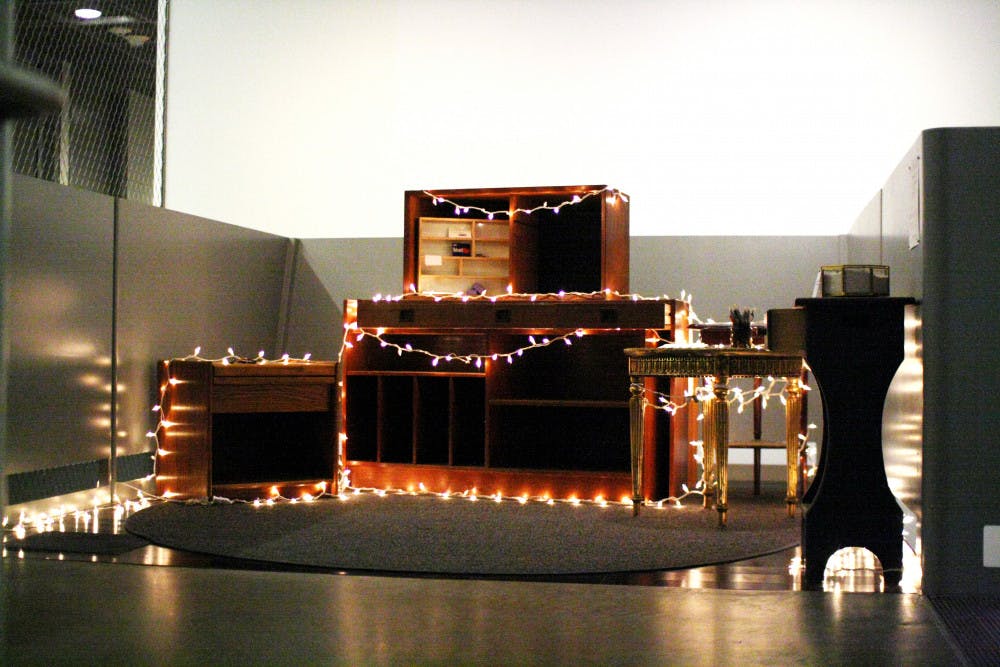An interactive exhibit called “Santuario” opened Wednesday in the Granoff Center for the Creative Arts, accompanying a graduate anthology conference where the creator, Rica Maestas GS, presented her work alongside that of other artists, performers and poets.
The exhibit’s namesake, El Santuario de Chimayo, is a small, adobe church that has sat in the desert of New Mexico for exactly 200 years. Every year, thousands of pilgrims walk over 25 miles from nearby Sante Fe to the church, which is said to rest on soil with sacred, curative powers. Maestas described it as an “oasis.”
As the decades have passed, memorabilia attesting to the experiences of pilgrims — from discarded crutches to more ambiguous, personal objects — have accumulated around the site’s shrines. “There’s this incredible accumulation of stuff, of all of these items that … mean something very special to the person who contributed them,” Maestas said. “It’s a really moving experience to be there, an experience all about feeling.”
But recently the Santuario has been designated a historic landmark, which has restricted the experience of pilgrims and made their visits to the landmark less intimate, Maestas said.
Maestas’ piece is a collection of warmly lit tables and shelves that are slowly being filled with objects given by viewers. It is intended to be an opportunity for people to rid themselves of items that represent “emotional baggage” from their pasts, she explained. There is also a delicate, glass container of sand to mimic the holy dirt around the New Mexican church and paper for writing thoughts that cannot be expressed with an object.
“The whole process of taking the sand is celebrating change and moving forward,” Maestas said, adding that she decided to make the process more universal by excluding the religious iconography that is scattered throughout El Santuario de Chimayo.
Maestas’ attachment to the space is a deeply personal one. It “helped me through months of depression, and it was a really moving site for me,” she said.
“I’m like a compulsive hoarder in certain circumstances. … I’ve realized that this hoarding is just a manifestation of me trying to hold on to things and hold on to those experiences,” she added. The aim of the installation is to foster a “process of coming together with other people and making a concerted effort to move forward without the stuff that’s holding you back.”
Maestas plans to hold a forum to discuss what should be done with the contributions, scheduled for Nov. 17th in the Granoff Convivium. “It’s really important to involve other people and share things,” she said, adding that the collaboration created an “implicit support network.”
“I did less-public art for a long time, and no matter how much content I put into it, it didn’t seem to resonate as much when the audience is looking at it passively or consuming it rather than participating in it,” Maestas said. “The bent of this project is to be a social practice art installation. … Santuario is a space, an occasion for you to visit. And (it is) for you to make the art.”
A communal takedown for “Santuario” will be held on Nov. 22.





